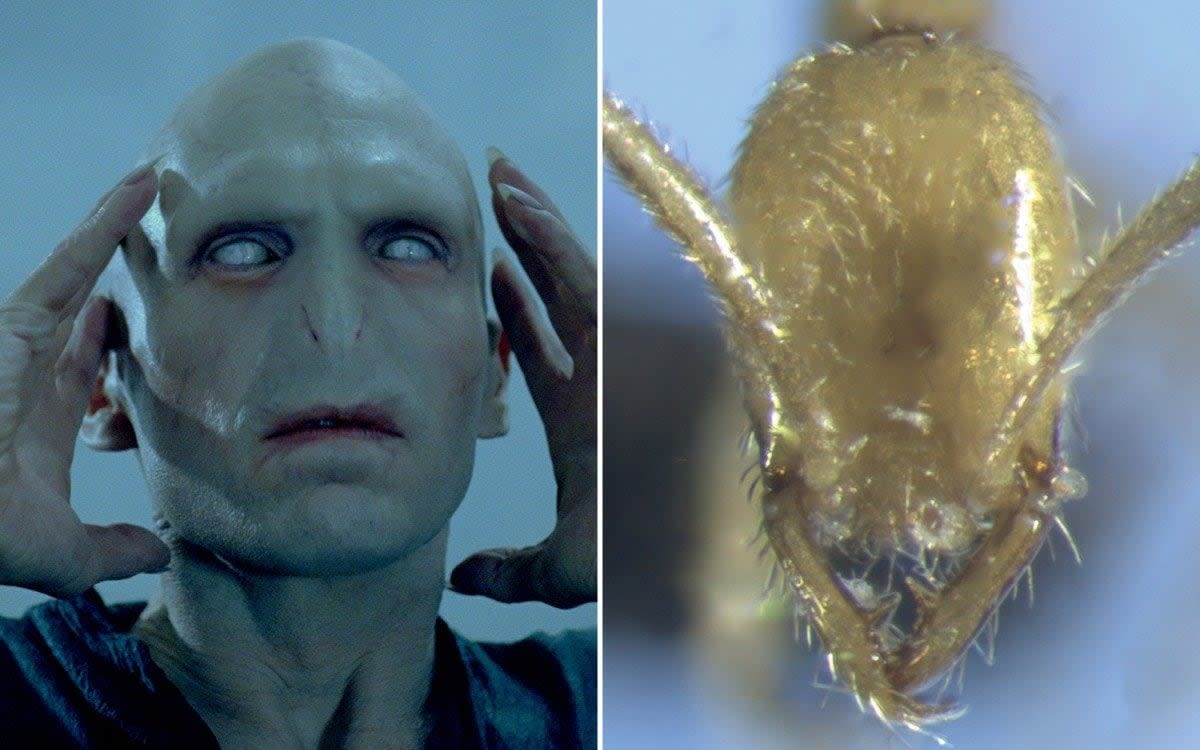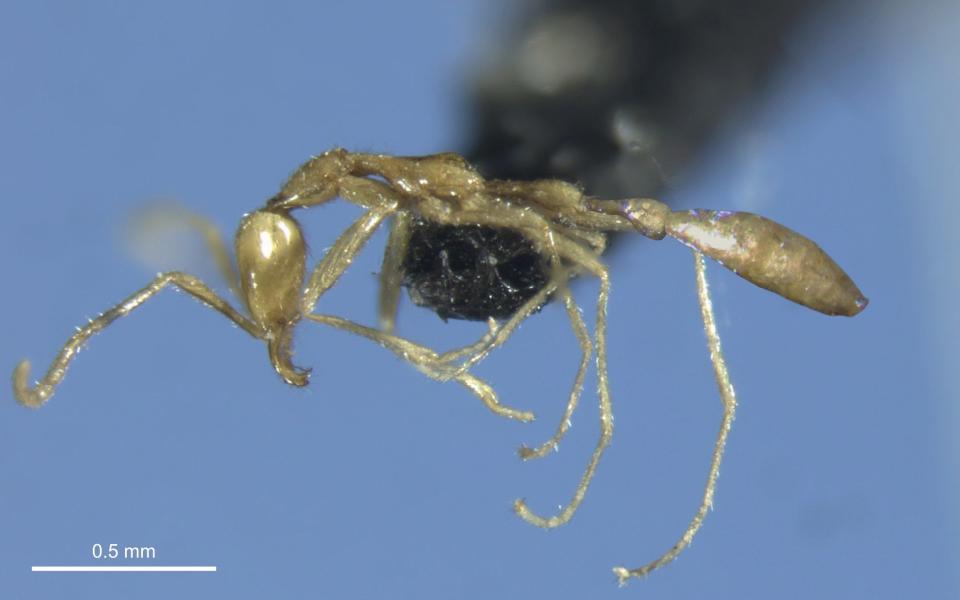Australian ant with ghostly features named after Lord Voldemort

- Oops!Something went wrong.Please try again later.
A new species of ant has been found living deep underground in the Australian Outback, prompting scientists to name it after Lord Voldemort because of the bug’s long face and pale, ghostly features.
The species was discovered in April living in the Pilbara, a desert region of Western Australia.
For its resemblance to the Harry Potter villain, the ant has been given the scientific name Leptanilla voldemort.
It is not uncommon for new species to be given names that recall famous personalities, either real or fictional, but it is thought to be the first time that a creature has been named after Lord Voldemort, who was played by Ralph Fiennes, the British actor.
Dr Mark Wong, from the University of Western Australia, came across the new species near the mining town of Newman. He said: “They live exclusively underground, and have pale features. It looks very ghostly.”
He added to the Australian Broadcasting Corporation: “It’s extremely slender and it’s got sharp fangs. That villainous appearance inspired me to name it after a famous villain like Lord Voldemort.”

There are other creatures that have been named after Harry Potter characters, including a wasp named after Lucius Malfoy, the father of Potter’s nemesis, and a crab that was named after Severus Snape.
The new species of ant is highly elusive – it was only found when scientists drilled an 80ft deep hole into the ground.
Ants from the genus Leptanilla are very rare in Australia. This is only the second time they have been found.
“We hardly encounter them, even as experienced myrmecologists, or ant scientists,” said Dr Wong.
Each year, hundreds of species of fish, mammals, birds and insects are given names by scientists.
Last year, a snake found by explorers in the mountains of Peru was named after Harrison Ford, in recognition of his work as an environmental advocate and role as vice chairman of Conservation International.
In 2009, a snail found in the tropics of northern Queensland was named Crikey steveirwini, after Steve Irwin, the late crocodile hunter and wildlife presenter. Its shell has an overall khaki appearance, which inspired the connection to Irwin.
A tree frog that was discovered in Ecuador in 2008 was named Hyloscirtus princecharlesi after the then Prince Charles, in honour of his work to protect rainforests.
A rare species of horse fly found in Queensland was named Scaptia beyonceae, after the singer Beyonce. Bryan Lessard, the scientist who chose the name, said that it was “the unique dense golden hairs on the fly’s abdomen that led me to name this fly in honour of the performer”.

